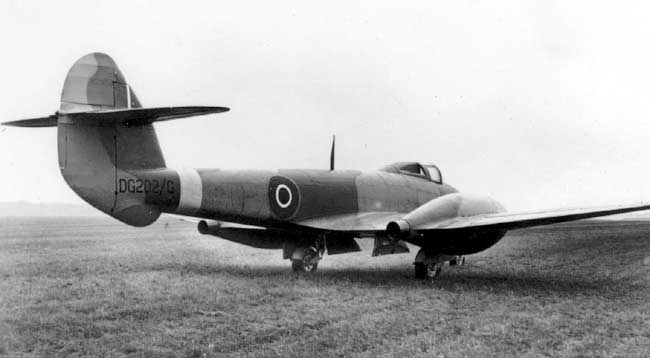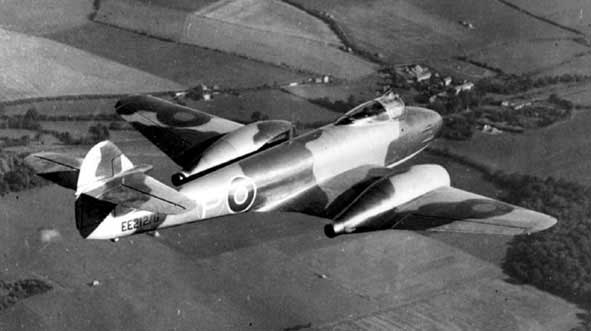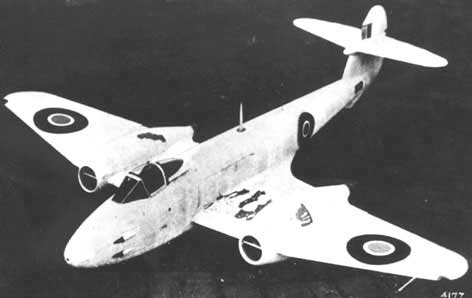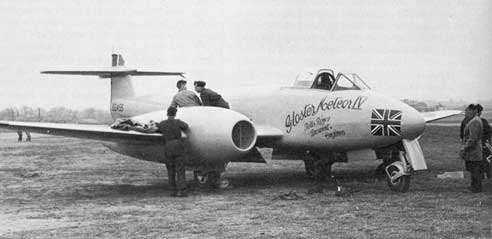

|
The Gloster F.9/40 known as the "Meteor" and the first Allied turbojet fighter in service (616 squadron)was designed by George Carter in 1940, tendered in August 1940, the result of which was an Air Ministry Specification (F.9/40) was made up around this design with the W.2 and engines to be made by Rover. Gloster received a contract on the 7/2/1941 for 12 aircraft as well as jigs and tooling for the production of 80 aircraft per month, it was hoped the first prototype would be ready in February 1942. On the 8/8/1941 a new contract was received for 300 of the Gloster "Whittle" aeroplanes. Naming the new aircraft took longer than finding the subcontractors for the tooling, a number names were suggested such as Terrifier, Wildfire, Violent and Vortex in the end the British Ministry of Aircraft Production told Gloster it would be called the Meteor. By 1942 continuing delays in the delivery of the W.2/B engines by Rover led to the encouragement in the development of two other types of engine by De Havilland and Vickers, both to be fitted in different prototype F.9/40 (DG207/G) and (DG204/G). The first flight of the "Meteor" took place on the 5/3/1943 (DG206/G) temporarily fitted with De Havilland H-1 engines. |
|
First flown on the 12/1/1944, twenty F.1 were ordered by the RAF all powered by the Rolls-Royce W.2B/23C engine, the first of these being EE219 which arrived at 616 Sq. on 12/7/1944. MK II One was made in November 1942 (DG207/G), fitted with the de Havlland H.1 "Goblin" engine, to test the feasibility of using this engine as Rover could not make enough W.2 engines. |

|

|
Mk III Made it's maiden flight in September 1944, fitted with the new Rolls-Royce Derwent engines as well as air-brakes, a sliding canopy, increased internal fuel capacity and a strengthened air frame. The first F.3's being received by the RAF in December 1944. However the first 15 were still fitted with the W.2B Welland engine as the new Derwent engines were not ready. The Mk III was the only Allied jet to see service over Germany in 1945 (painted in all white to stop any confusion with Allied AA gun crews) F.4 In 1945 two much modified Mk IIIs were fitted with the Rolls-Royce Derwent 5 engines in new long-chord nacelles, a pressurized cockpit ,extensive airframe strengthening and a gloss finish, ready for an attempt at the world speed record. This was done on the 7/11/1945 with EE454 making 606 mph and EE455 making 603 mph. These aircraft would serve as prototypes for the Mk IV with made it's maiden flight on the 12/4/1946. |
| The Gloster "Meteor" continue to be the RAF's front line fighter for another 10 years after the war as a day fighter, night fighter, PR and trainer, as well as serving with over 10 other air forces around the world, some well into the 1970s, Showing just how versatile the design was, even though the aircraft it's self was aerodynamically obsolete by 1945. |  |
|
EE 455 on the 7/11/1945 just before
it's flight
|